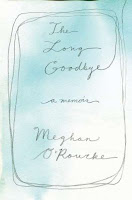Anne Perry (born Juliet Marion Hulme in Blackheath London on 28 October 1938) is an English author of historical detective fiction. Ironically, Perry was convicted of the murder of her friend's mother in 1954. The daughter of Dr. Henry Hulme, an English physicist, Perry (then known as Juliet Hulme) was diagnosed with tuberculosis as a child and sent to the Caribbean and South Africa in hopes that a warmer climate would improve her health. She rejoined her family when her father took a position as Rector of the University of Canterbury in New Zealand when she was 13.
Together with her school friend Pauline Parker, Hulme murdered Parker's mother, Honora Rieper,[2] in June 1954. Hulme's parents were in the process of separating, and she was supposed to go to South Africa to stay with a relative. The two teenage girls, who had created a rich fantasy life together did not want to be separated. They had hoped to go to England with Hulme's father after the divorce.
On 22 June 1954, the girls took Honora Rieper for a walk in Victoria Park in their hometown of Christchurch. On an isolated path, Hulme dropped an ornamental stone so that Ms. Rieper would lean over to retrieve it. At that point, Parker had planned to hit her mother with half a brick wrapped in a stocking. The girls presumed that would kill the woman. Instead, it took 45 frenzied blows from both girls to finally kill Honora Rieper. The brutality of the crime has contributed to its notoriety. Parker and Hulme stood trial in 1954, and were found guilty. As they were too young to be considered for the death penalty under New Zealand law at the time, they were convicted and sentenced to prison. They were released separately some five years later. A condition of their release was that they were never to meet or contact each other again. These events formed the basis for the 1994 film Heavenly Creatures.
After being released from prison, Hulme returned to England. For a period she lived in the United States, where she joined The Church of Jesus Christ of Latter-day Saints in 1968. She later settled a Scottish village where she lived with her mother. Her father went on to a distinguished scientific career, heading the British hydrogen bomb programme.
Hulme took the name Anne Perry, the latter being her stepfather's surname. Her first novel, The Cater Street Hangman, was published under this name in 1979. Her works generally fall into one of several categories of genre fiction, including historical murder mysteries and detective fiction. Many of them feature a number of recurring characters, most importantly Thomas Pitt, who appeared in her first novel, and amnesiac private investigator William Monk, who first appeared in her 1990 novel The Face of a Stranger. As of 2003 she had published 47 novels, and several collections of short stories.
Her works and series include:
Featuring William Monk
- The Face of a Stranger (1990)
- A Dangerous Mourning (1991)
- Defend and Betray (1992)
- A Sudden, Fearful Death (1993)
- The Sins of the Wolf (1994)
- Cain His Brother (1995)
- Weighed in the Balance (1996)
- The Silent Cry (1997)
- A Breach of Promise (alt. title: Whited Sepulchres) (1997)
- The Twisted Root (1999)
- Slaves of Obsession (alt. title: Slaves and Obsession) (2000)
- A Funeral in Blue (2001)
- Death of a Stranger (2002)
- The Shifting Tide (2004)
- Dark Assassin (2006)
- Execution Dock (2009)
- Acceptable Loss (August 30, 2011)
- A Sunless Sea (TBA)
Featuring Thomas Pitt
- The Cater Street Hangman (1979)
- Callander Square (1980)
- Paragon Walk (1981)
- Resurrection Row (1981)
- Rutland Place (1983)
- Bluegate Fields (1984)
- Death in the Devil's Acre (1985)
- Cardington Crescent (1987)
- Silence in Hanover Close (1988)
- Bethlehem Road (1990)
- Highgate Rise (1991)
- Belgrave Square (1992)
- Farrier's Lane (1993)
- The Hyde Park Headsman (1994)
- Traitors Gate (1995)
- Pentecost Alley (1996)
- Ashworth Hall (1997)
- Brunswick Gardens (1998)
- Bedford Square (1999)
- Half Moon Street (1998)
- The Whitechapel Conspiracy (2001)
- Southampton Row (2002)
- Seven Dials (2003)
- Long Spoon Lane (2005)
- Buckingham Palace Gardens (2008)
- Treason at Lisson Grove (2011)
- Dorchester Terrace (2012)
The Christmas stories
- A Christmas Journey (2003)
- A Christmas Visitor (2004)
- A Christmas Guest (2005)
- A Christmas Secret (2006)
- A Christmas Beginning (2007)
- A Christmas Grace (2008)
- A Christmas Promise (2009)
- A Christmas Odyssey (2010)
- A Christmas Homecoming (October 25, 2011)
Fantasy
- Tathea (1999)
- Come Armageddon (2001)
[edit]Other books
- The One Thing More (2000)
- A Dish Taken Cold (2001)
- Death by Horoscope (2001, short stories by various authors)
- Much Ado About Murder (2002, short stories by various authors)
- Death By Dickens (2004, short stories by various authors)
- I'd Kill For That (2004, one novel written by multiple authors)
- Letters From The Highlands (2004)
- Thou Shalt Not Kill: Biblical Mystery Stories (2005, short stories by various authors)
- Heroes (Most Wanted) (2007)
- The Sheen on the Silk: A Novel (2010)





